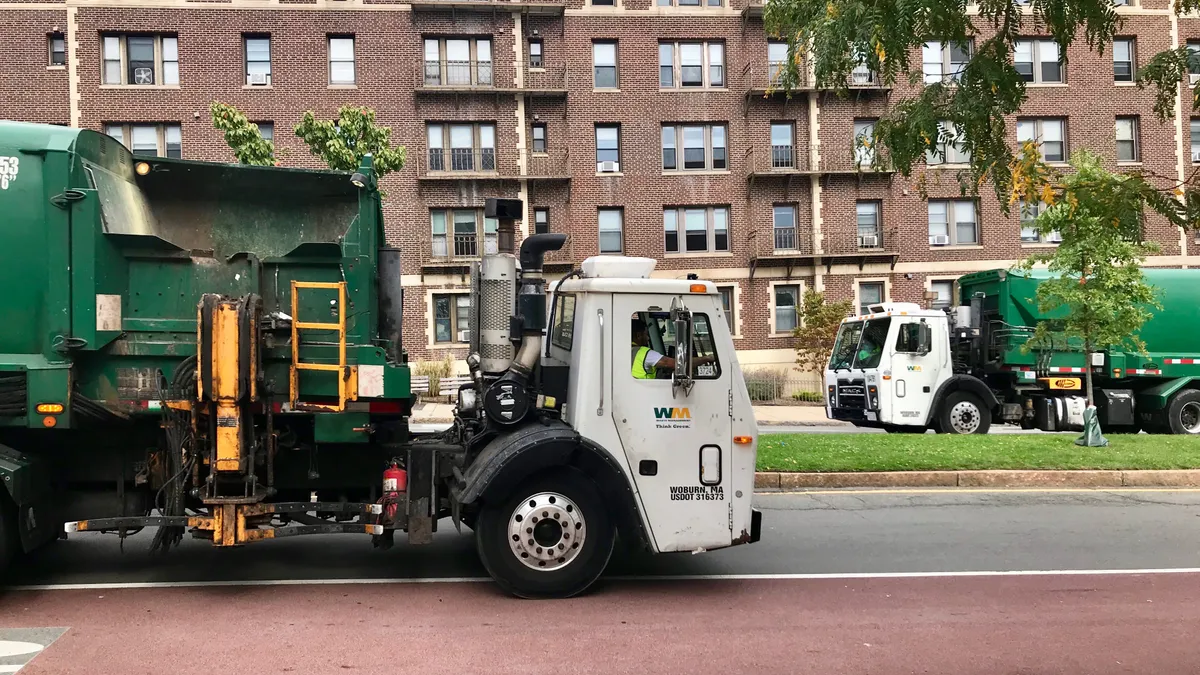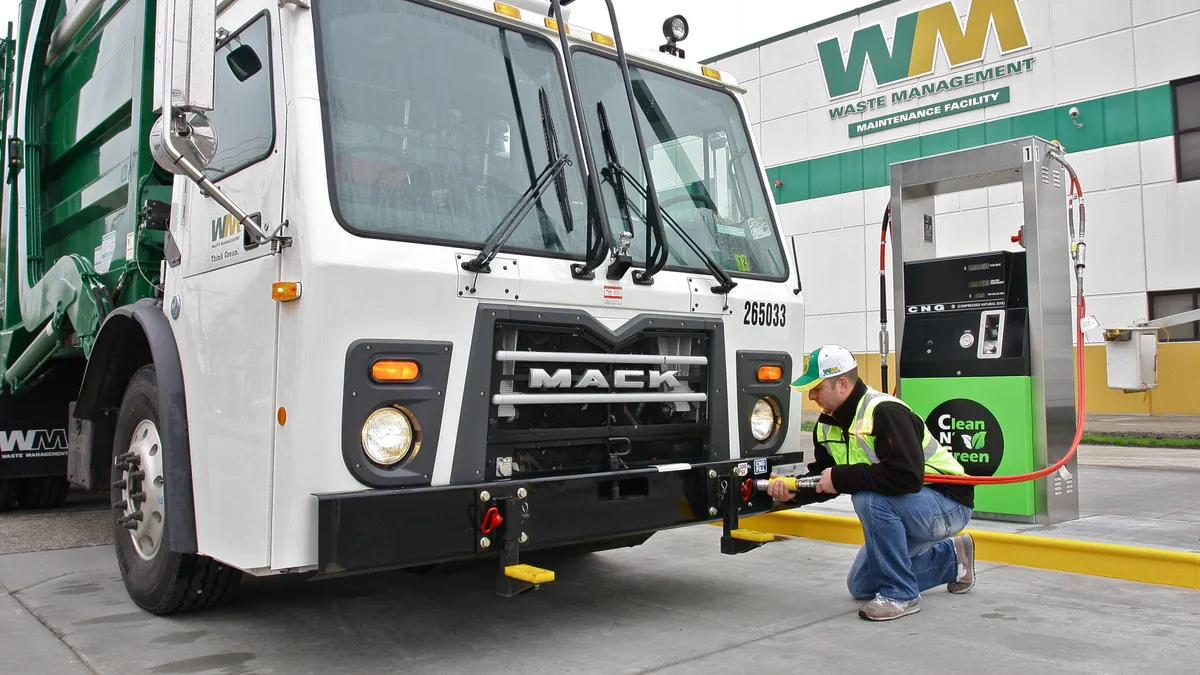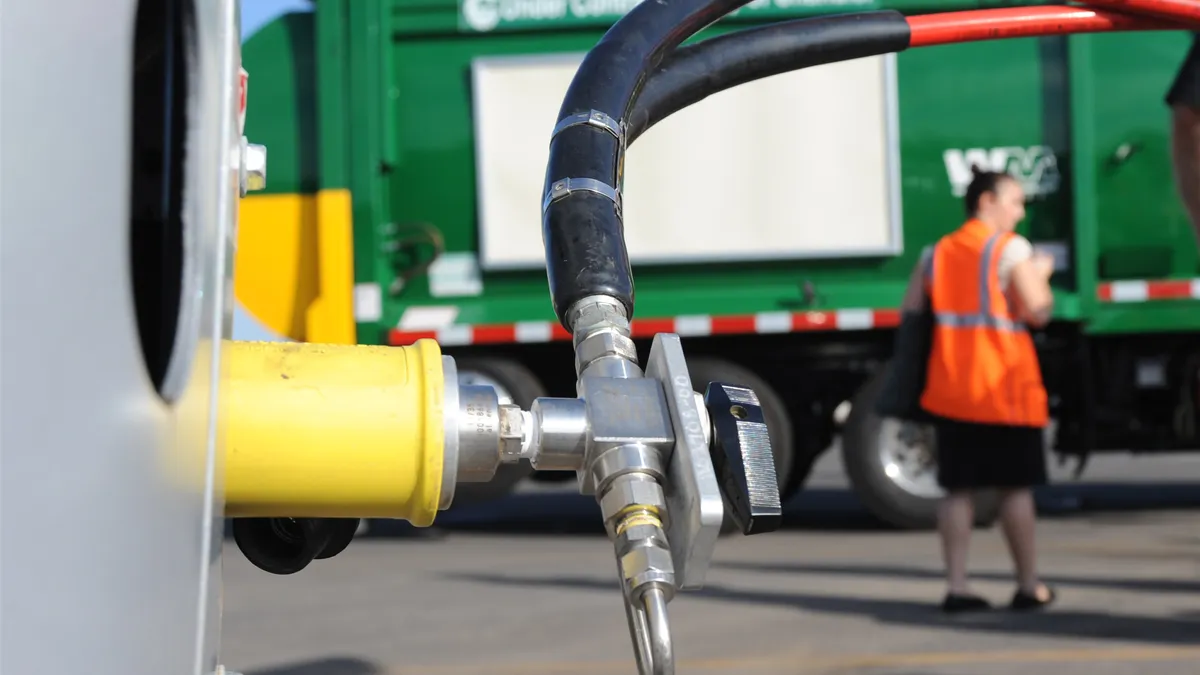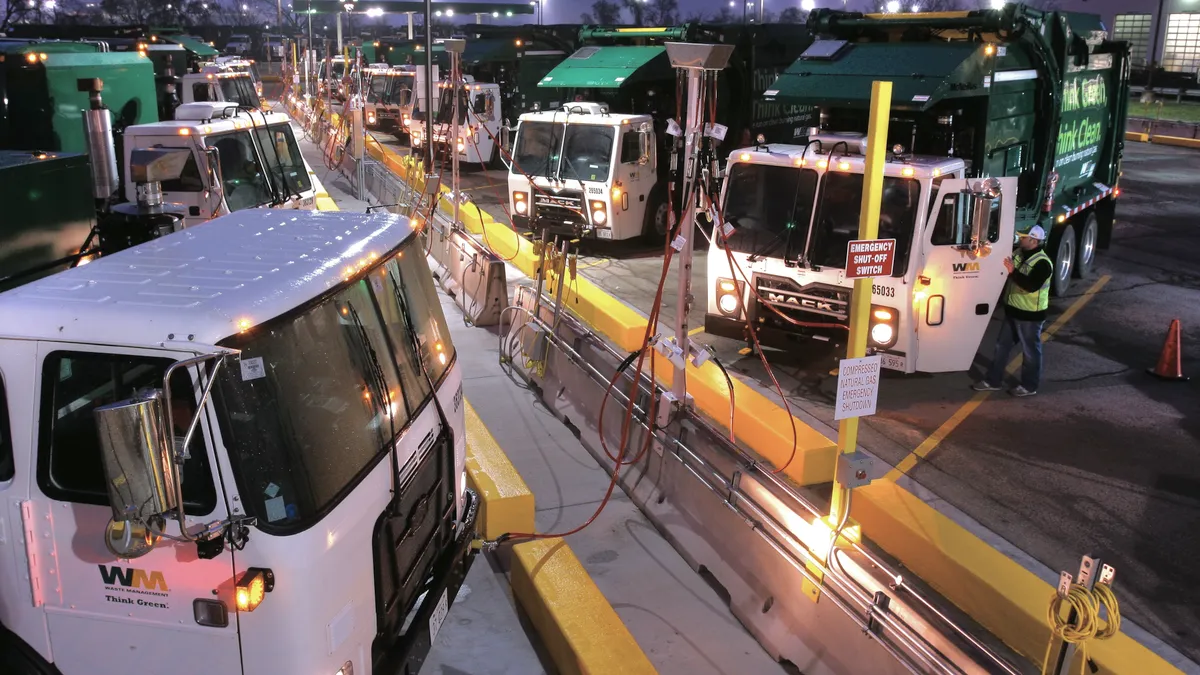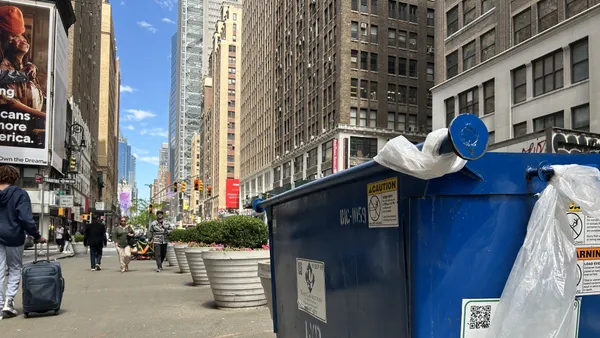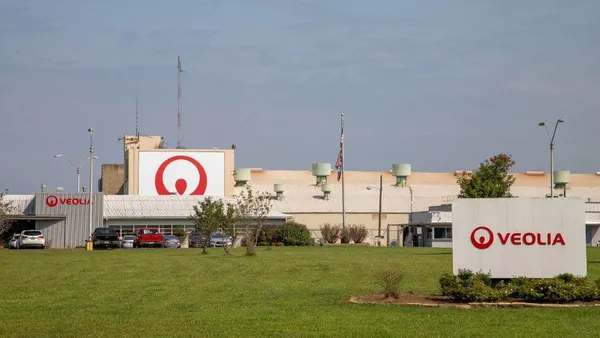Q3 Earnings
| Revenue | $4.665B |
| Year-Over-Year Change | 20.8%▲ |
| Net Income | $538M |
Economic trends around inflation hit Waste Management harder than expected during the third quarter, according to executives speaking on a Tuesday earnings call, but the company expressed confidence it's on track to overcome these conditions through ongoing price increases and operational savings.
Labor-related challenges were a key obstacle, with wage inflation up by 8.3% during the quarter and overall labor inflation costing an estimated $60 million. Supply chain constraints and related factors contributed to another $100 million of inflation in other operating cost categories. CEO Jim Fish described this mix of factors as an "unexpectedly acute and fast-moving challenge," but positive trends also prompted the company to once again raise 2021 revenue expectations, anticipating an increase of as much as 17.5% over last year.
Economic updates
- Overall volumes continued to improve, due to pandemic-related reopenings and new business, for an increase of 3.8%. Commercial and special waste volumes were up by even higher rates. Overall core price was up by 4.6% and the company saw increasing profitability in business lines such as residential.
- At the same time, overtime costs were up significantly as Waste Management worked to keep up with rising volumes amid staffing limitations. Chief Operating Officer John Morris said hiring and retention trends have improved in recent months, helped in part by a majority of the company's workforce seeing wage increases this year.
- COVID-19 remains a headwind. According to Fish, an estimated 900 employees were out due to quarantine or illness reasons during one peak week in September — about half of whom were drivers. That absence number is now closer to 200 employees. The topic of vaccines, including a pending federal mandate for large employers, was not discussed.
A key message throughout the call was Waste Management's expectation it can offset many of these other cost pressures through regularly scheduled price increases during 2022 and beyond. An estimated 40% of revenue is tied to contracts with pricing indexes that update on a look-back basis and a sizable amount of that business is set for an increase during the first half of 2022. Customers that fall outside of that structure can expect to see increases as well, on an annual basis.
While Fish described pricing as the "primary lever" to deal with economic pressures, he also added: "I don’t think we can overstate the importance of using automation to take some of the labor intensity out of this business."
Throughout the call, executives discussed ongoing efforts to address high-turnover positions with accelerated technology spending. Examples of positions that are being automated included customer service staff handling new account setups, recycling sorters and collection workers on manual routes. According to Fish, the company is still in the "second inning" of this process and will be doing it through the natural attrition cycle rather than large layoffs.
MRFs were highlighted as a key opportunity, with an estimated $1 million in labor savings per quarter at each of the four large facilities where Waste Management has invested in widespread automation. The company is on track to put $200 million toward MRF investments this year and plans to ramp up spending across dozens of other single-stream facilities in the next few years.
Other news
- The pace of capital expenditures continues to be slower than hoped, due to supply chain disruptions and labor constraints on construction projects. Waste Management spent $1.13 billion through the quarter, but may not hit its annual target of at least $1.78 billion. Chief Financial Officer Devina Rankin said fleet spending is a large component and only 70% of expected new trucks were delivered through the quarter.
- Waste Management's recycling revenue continues to grow, coming in at $464 million for the quarter as compared to $290 million last year. Along with labor savings, higher commodity prices are another key factor in boosting profitability that executives expect will continue.
- Following the U.S. EPA's new PFAS road map, the company reiterated its position that handling these chemicals could be an opportunity. While Morris said there may be higher costs involved short-term, “we still believe over the long-term the post-collection assets we have are going to benefit from that.”
Looking ahead
- During the quarter, Waste Management spent $500 million on stock buybacks and $241 million on dividends. The company has spent $1.7 billion on these categories through the third quarter and is on track to buy back another $350 million in shares by the end of the year.
- The integration of Advanced Disposal Services' operations is now about 70% complete, with almost all customers expected to be migrated over to one billing system by the end of the year. Morris reported $26 million in new operational savings from the acquisition during the quarter, reiterating plans to hit at least $100 million for 2021.
- M&A activity may be high in the industry, but Waste Management is continuing its selective strategy after the Advanced deal and no notable transactions were reported. "I would much rather grow organically than pay a multiple of 13 or 14 times," said Fish, referencing heightened seller expectations. "We’re going to be disciplined about that.”


